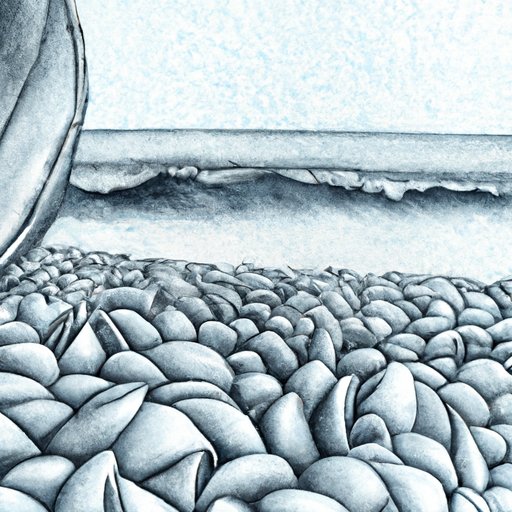
Introduction
Drawing a beach scene can be a challenge, but with the right tools and techniques, anyone can create a stunning and relaxing piece of art. In this article, we will provide a step-by-step guide to drawing your own beach scene, as well as tips for capturing the essential elements of beach scenery.
Step-by-Step Guide to Drawing Your Own Beach Scene
Before you begin, you will need some basic drawing tools, such as pencils, erasers, and paper. You may also want to invest in some colored pencils or markers to add depth and color to your drawing.
Begin by creating a basic outline of your beach scene. You can use simple shapes, such as circles for the sun and waves, and rectangles for the sand and buildings. Once you have your basic outline, you can begin adding more detail and shading to create a more realistic image.
Sketching a Relaxing Beach Landscape
To create a realistic beach landscape, you will want to pay close attention to the essential elements of beach scenery, such as sand, water, and vegetation. Start by sketching the outline of the sand, and then add texture and shading to create a more realistic look. Next, draw the water, using curved lines to capture the movement and flow of the waves. Finally, add in some vegetation, such as palm trees or beach grass, to add depth and interest to your drawing.
Drawing the Perfect Wave
Capturing the motion and shape of a wave is essential to creating a realistic beach drawing. Start by sketching the outline of the wave, paying close attention to the curves and angles of the water. Use shading and texture to add depth and dimension to your wave, and experiment with different types of waves, such as crashing or rolling waves.
Capturing the Light of a Beach Sunset
A beach sunset can be a beautiful and inspiring subject for a drawing. To capture the beauty of a beach sunset, focus on color and shading. Use warm colors, such as oranges and yellows, to create a sense of warmth and light. Add shading and depth using darker colors or pencils, and experiment with different techniques, such as blending or cross-hatching.
Drawing Beach Figures
Adding figures to your beach scene can help create a sense of depth and realism. Practice drawing people, animals, and objects commonly found at the beach, such as surfers, seagulls, and beach umbrellas. Pay close attention to the proportions and movements of your figures, and use shading and texture to add depth and dimension.
The Art of Perspective in a Beach Scene
Adding perspective and depth to your drawing is key to creating a realistic beach scene. Use techniques such as foreshortening and overlapping to create a sense of depth, and experiment with different viewpoints, such as a view from the water or a viewpoint of the shoreline.
Using Different Drawing Styles to Depict a Beach
Different styles of drawing can be used to create a beach scene. Depending on the style you choose, your drawing can range from realistic to impressionistic. Experiment with different techniques, such as sketching or watercolors, to create a unique and personal beach drawing.
Conclusion
Drawing a beach scene can be both challenging and rewarding. By following these simple steps and tips, anyone can create a beautiful and relaxing beach drawing. Remember to experiment with different techniques and styles, and most importantly, have fun and enjoy the process of creating your own beach scene.





